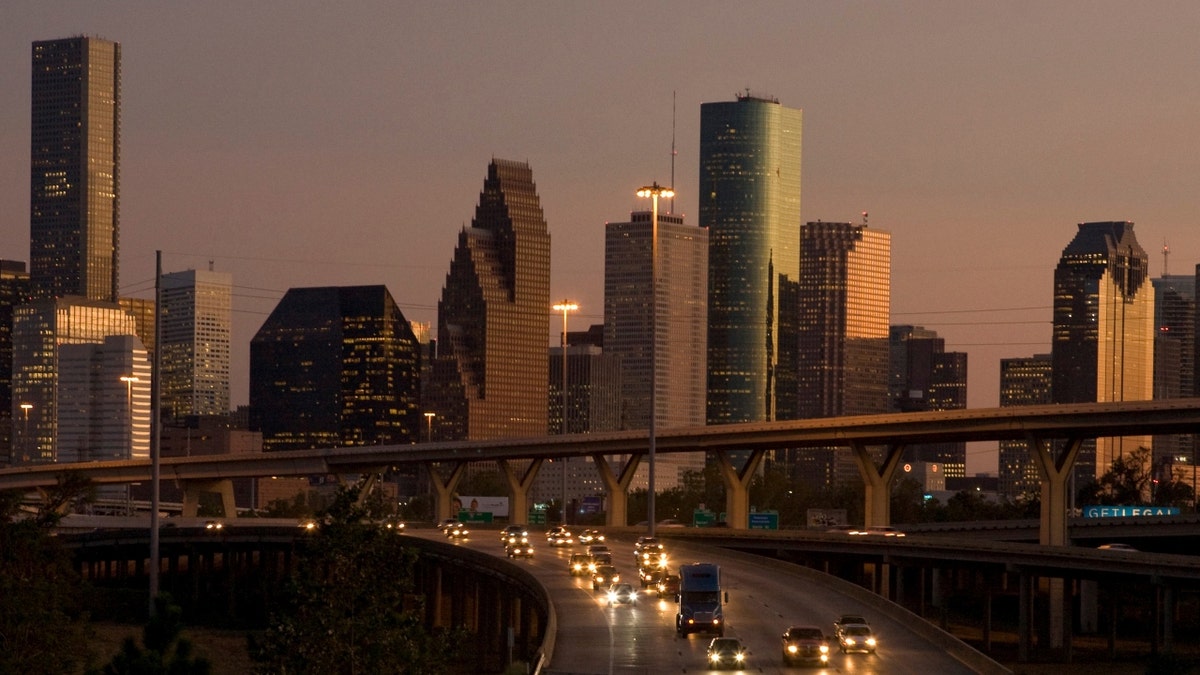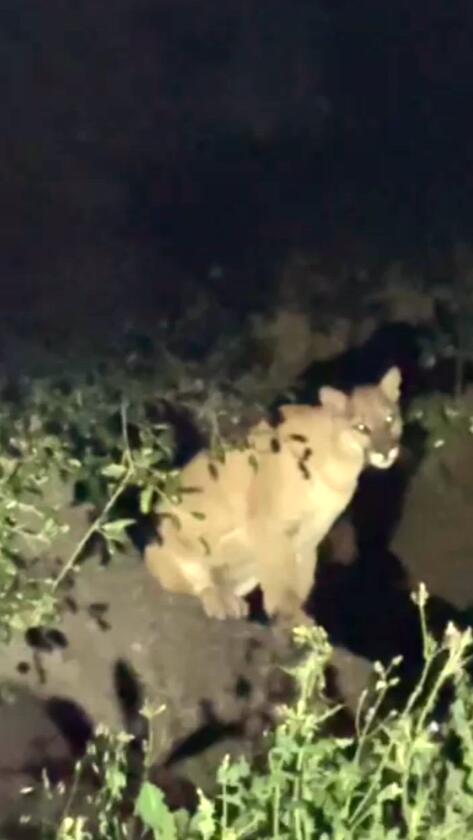World News
Putin’s War Will Soon Reach Russians’ Tax Bills

President Vladimir V. Putin of Russia is about to institute a rare tax increase on corporations and high earners, a move that reflects both the burgeoning costs of his war in Ukraine and the firm control he has over the Russian elite as he embarks on a fifth term in office.
Financial technocrats in Mr. Putin’s government are searching for new ways to fund not just an expensive war in Ukraine but also a broader confrontation with the West that is likely to remain costly for years. Russia is allocating nearly a third of its overall 2024 budget to national defense spending this year, a huge increase, adding to a deficit that the Kremlin has taken pains to keep in check.
The proposed tax increase underscores Mr. Putin’s rising confidence about his political control over the Russian elite and his country’s economic resilience at home, showing that he is willing to risk alienating parts of society to fund the war. It would represent the first major tax overhaul in over a decade.
“I think that this is a real sign of how comfortable he is,” said Richard Connolly, an expert on the Russian economy at Oxford Analytica, a strategic analysis firm. “The fact that they are doing it — they are looking to repair the house whilst the weather is good, or at least reinforce the walls from a fiscal point of view.”
Military spending and high oil prices have buoyed the Russian economy and driven up wages, despite causing higher inflation and shortages in the labor market; that is probably leading financial officials to see the current moment as a good time to push through tax increases.
Those responsible for paying Russia’s bills cannot predict how much Mr. Putin’s future geopolitical moves will cost or whether Western sanctions will further limit income.
“From Moscow’s point of view, they are looking in pretty good shape, and now is a good time to do these things,” Mr. Connolly said. “Even the people who it will fall on have had a good couple of years and look like they are going to have a good year ahead.”
Few details are known about the planned increase. In a speech on Wednesday, Mr. Putin said his government was assessing various proposals. He said the new tax arrangements would remain fixed for a long period to ensure stability.
“Modernization of the fiscal system should ensure a more equitable distribution of the tax burden, while stimulating businesses that develop and invest, including in infrastructure, social and training projects,” Mr. Putin said.
Most Russians pay income tax at a flat rate of 13 percent, significantly lower than what taxpayers in the United States and Western Europe typically pay. In an interview in March, Mr. Putin said he planned to introduce a new progressive tax scale in part to alleviate poverty, a popular message among many Russians who support increasing taxes on the country’s rich, which have historically been low.
A tax that largely spares lower-income earners could also help mute discontent over the war among poorer Russians, who are providing much of the manpower for the army and bearing the brunt of the casualties. Mr. Putin has signaled that the tax overhaul will include special incentives for certain groups, which could include Russians directly involved in the war effort or families with three or more children.
In internal discussions, Russian officials have considered raising the personal income tax for earnings over a million rubles ($10,860) a year to 15 percent from 13 percent, and increasing the rate for earnings above five million rubles a year ($54,300) to 20 percent from 15 percent, according to a report by the independent Russian investigative outlet Important Stories, which cited unnamed government officials and was confirmed by Bloomberg News.
The change is likely to hit particularly hard in Moscow, whose residents earn some of the country’s highest salaries. The average Russian salary last year was about 884,500 rubles ($9,606), according to the state statistics agency, Rosstat. In Moscow, it was nearly double, or about 1,636,800 rubles ($17,776).
The government is also considering raising the tax on corporate profits to 25 percent from 20 percent, Important Stories, an independent news outlet, reported. The change in corporate taxation is considered one of the key ways to increase the share of revenue from sources other than the oil and gas sector.
About a third of the Russian federal budget comes from oil and gas, meaning a substantive drop in prices in that industry could impede Moscow’s ability to fund the war, said Heli Simola, a senior economist at the Bank of Finland.
“They are not thinking about whether the companies are happy or not,” Ms. Simola said. “They want to get the money, and they also need it, and they want to show the companies they have to do their part in financing the war and the common cause.”
The planned new tax policies demonstrate how the whole of Russian society, from business executives down to mobilized soldiers, are being pulled into the war effort, which has become the defining principle of Russian public life.
Still, apart from high earners, many Russians would not pay significantly more in income taxes under the proposals being discussed, limiting the potential political backlash for Mr. Putin.
Moscow’s defense expenditures have skyrocketed on account of the war. Compared with the year before the full-scale invasion of Ukraine, the Russian government’s spending on national defense has more than tripled. Russia’s financial technocrats are taking advantage of the current economic moment to raise funds for future war expenditures.
“No one knows Putin’s projections” for the war, said Alexandra Prokopenko, a fellow at the Carnegie Russia Eurasia Center. “There are rumors and anticipation of an upcoming Russian escalation. They don’t have a crystal ball; that’s why they want to have this money now.”
For much of the 1990s, Russia operated under a complicated tax code with limited enforcement, allowing many Russians to avoid paying taxes altogether.
But in the years after Mr. Putin came to power nearly a quarter century ago, the nation underwent a tax revolution. The introduction of the 13 percent flat tax on personal income encouraged compliance, drastically increasing income tax revenue for the state but raising questions of fairness in a society with significant income inequality.
Russia technically departed from the flat tax in 2021, requiring residents earning over five million rubles per year to pay 15 percent instead of 13 percent. A report in the Russian business newspaper RBK found that excess revenues derived from the increase came overwhelmingly from Moscow.
Beyond running a deficit, Russian finance officials have found creative ways to raise more money to fund the war since Mr. Putin launched the invasion in early 2022.
Russia changed the way it calculates taxes on oil companies last year to fill government coffers. It taxed exits by foreign companies leaving Russia and introduced new export duties on goods like oil, timber and machinery. And Mr. Putin placed a “windfall” tax on companies’ excess profits.
Many businesses in Russia are happy to pay higher corporate tax rates so long as the surprise windfall taxes and payments end, but that isn’t guaranteed.
“You increase the corporation tax now, then say you will try your best to refuse windfall taxes, but then if the war carries on, these things are likely to continue,” said Mr. Connolly, who predicted that higher Russian expenditures on defense would persist for a long time.
Ms. Prokopenko, a former official at the Russian central bank, said the Russian authorities, having initially tapped more oil-and-gas-related revenue to fund the war, would now go after all corporate profits.
“They need to do what’s called income mobilization,” she said. “And increasing taxation is part of this.”
Oleg Matsnev and Alina Lobzina contributed reporting from Berlin.
World News
Unconfirmed sighting of mountain lion in Griffith Park recalls L.A.’s favorite big cat, P-22

The mountain lion was caught in the Tesla’s headlights. Vladimir Polumiskov moved both quickly and slowly, not wanting to draw unwanted attention.
He put his 2-year-old son back in the car seat and got behind the wheel and quietly closed the door. His wife, Anastasiia Prokopenko, was in the passenger seat; she couldn’t believe what they were seeing.
“No way. No way,” she said. “Get in the car. Get in the car.”
The family, just back from a sushi dinner on Tuesday night, had pulled into a parking space at their apartment complex off Barham Boulevard in the Hollywood Hills. Living on the western edge of Griffith Park, they were accustomed to seeing wildlife — coyotes, bobcats, deer, foxes — wandering into their backyard. But a mountain lion was extreme.
“We’re not getting out,” Prokopenko said.
Less than 13 feet away, the cat was sitting on the low-angled trunk of an oak tree, partly hidden by weeds, his blond coat set off by the bright lights. Polumiskov, 30, reached for his phone and started shooting video.
“This guy was huge,” he said.
Though the sighting has not been confirmed by the National Park Service, which oversees the Santa Monica Mountains National Recreation Area and has also studied wildlife in the 4,000 acres of Griffith Park, the possibility of a mountain lion making its home in this island wilderness may give many Angelenos a sense of déjà vu all over again.
The mountain-lion king of Griffith Park — a cat known as P-22 — roamed these hills for 10 years. Captured in December 2022, he was euthanized after a team of doctors determined that because of internal injuries and infection, he was too sick to return to the wild.
A few months before, Polumiskov said he had seen P-22 skulking through the same parking lot before running off. “I had the same reaction then,” he said. “That doesn’t change. It was shocking.”
“Los Angeles misses P-22,” said Beth Pratt of the National Wildlife Federation, perhaps his most ardent champion.
In February 2023, Pratt helped organize at the Greek Theatre a sold-out celebration of his improbable life in Griffith Park, drawing more than 6,000 people wanting to pay their respects to the charismatic cat who, surrounded by development, freeways and cemeteries, lived peaceably in the center of Los Angeles.
Seven months later, the eighth annual official P-22 Day festival drew 15,000 attendees.
When Pratt first heard of this new sighting, she felt slightly overcome.
“It does my heart good,” she said . “It felt like P-22 had sent someone back to us — just to keep the hope alive that we hadn’t entirely banished the wildness in our lives.”
The National Park Service, which has reviewed Polumiskov’s video, is taking the claim seriously, according to spokesperson Ana Beatriz Cholo.
The park service has been studying the mountain lion population in the Santa Monica Mountains since 2002, when it collared its first cougar, which was given the name P-1 (P is for puma). Since then, it has tracked and collared 121 of the animals throughout the park.
If collared, the big cat in last week’s video would be P-122.
Video of a mountain lion spotted on Tuesday near Barnham Boulevard in Toluca Hills, new Hollywood. (Vladmir Polumisko)
“I’m a scientist at heart, but there is something almost mystical about this,” said Pratt, referring to the coincidental possibility that the two cats in Griffith Park would share so similar a number.
Park Service researchers are conducting interviews and combing through footage from wildlife cameras positioned throughout Griffith Park.
“We obviously want to make sure we confirm this is the real thing,” Cholo said. “Hopefully we’ll get that in the near future.”
But hope aside, she added, there is no guarantee that the mountain lion will stick around. Pumas need up to 200 square miles of habitat, and Griffith Park offers a little more than eight.
After shooting the video, Polumiskov put the Tesla in reverse and found another parking space far away from the mountain lion. Two hours later, he returned with a friend, and the cat was still there.
“He was still sitting in that tree, looking at us,” he said. “He is a beautiful, beautiful animal, young and healthy, perhaps the biggest mountain lion I’ve seen in my life.”
Four months earlier, Polumiskov had seen — while driving — what he believed was also a mountain lion. But without evidence, his family and friends doubted him. Now he had something more tangible.
The next day, he got a call from Jeff Sikich, a wildlife biologist and mountain lion specialist with the park service, who asked him a few simple questions — where and when — and reminded him to play it safe.
“He definitely educated me,” Polumiskov said.
“While it is exciting to see a wild animal,” said Cholo, “if you see a mountain lion, give it space. Don’t follow it. As tempting as it might be, this is a big cat and its behavior can be unpredictable.”
The total number of mountain lions in California is estimated to be between 3,200 and 4,500. About a dozen of the cats are said to live in the Santa Monica Mountains, and they are at risk for extinction because of low genetic diversity.
The current construction of a wildlife corridor over a 10-lane stretch of the 101 Freeway at Liberty Canyon in Agoura Hills promises to be a critical lifeline for the endangered species. When completed in 2026, it will be the largest — 200 feet long and 165 feet wide — and most expensive bridge of its kind in the world.
“The Wallis Annenberg Wildlife Crossing is critical” for the survival of the species, Pratt said . “But Griffith Park also needs safe routes for its wildlife trying to navigate the city.”
World News
Former CIA director reacts to Stefanik’s remarks about ‘wiping’ Hamas ‘off the face of the Earth’
House GOP Conference Chair Elise Stefanik delivered remarks at the Israeli Knesset Sunday, saying victory for Israel in the war against Hamas starts with “wiping” those responsible for the October 7 terrorist attacks “off the face of the Earth” and calling for a return to former President Donald Trump’s policies. Former CIA director Leon Panetta reacts.
World News
Texas crime victims liaison pleads guilty to human smuggling with county vehicle

A Texas crime victims coordinator who was employed by the Starr County District Attorney’s Office has pleaded guilty to using a county vehicle to smuggle immigrants into the United States.
Bernice Garza pleaded guilty Friday to conspiracy to transport undocumented people within the United States, according to a report from KRGV.
Two others, Magali Rosa and Juan Antonio Charles, were also arrested in connection with the investigation and have pleaded guilty to human smuggling charges, according to the report.

A 2015 Chevrolet Traverse with the emblem of the Starr County District Attorney’s Office in Texas. An employee of the office was fired after the car was used in a human smuggling scheme, authorities said. (Victoria County Sheriffs Office)
Garza was arrested in December 2022 after a traffic stop in Victoria County noted that the vehicle registered with the county was making “numerous unauthorized trips to the Houston area,” the criminal complaint said.
Magali Rosa was the driver of the vehicle, according to police, while Garza and Charles were among the passengers in the vehicle.
Police say Rosa tried to argue that Garza was the Starr County district attorney during the stop, though she later confessed to making over 40 smuggling trips from Rio Grande City to Houston in the government vehicle.

Houston skyline (Reuters/Richard Carson)
FOX NEWS CREW WITNESSES DRAMATIC HUMAN SMUGGLING BUSTS BY TEXAS AUTHORITIES
“This investigation is an example of no one being above the law, and our office taking swift action in eliminating public corruption,” the DA’s office said in a statement after the arrests.
Garza was soon terminated from the DA’s office, while the four migrants who were in the vehicle at the time of the stop were turned over to the U.S. Border Patrol.
CLICK HERE TO GET THE FOX NEWS APP
Sentencing for Garza and Charles was set for Sept. 28, the reporting notes, while sentencing for Magali Rosa is set for June 27.
-

 African History4 months ago
African History4 months agoBlack History Facts I had to Learn on My Own pt.6 📜
-

 African History4 years ago
African History4 years agoA Closer Look: Afro-Mexicans 🇲🇽
-

 African History1 year ago
African History1 year agoPROOF AFRICAN AMERICANS AIN'T FROM AFRICA DOCUMENTED EVIDENCE
-

 African History2 years ago
African History2 years agoHow Did Normal Medieval People Survive Winter? | Tudor Monastery Farm | Chronicle
-

 African History4 years ago
African History4 years agoA Closer Look: Afro-Mexicans 🇲🇽
-

 African History3 years ago
African History3 years agoWhat happened to the many African Kingdoms? History of Africa 1500-1800 Documentary 1/6
-

 African History3 years ago
African History3 years agoThe Entire History of Africa in Under 10 Minutes – Documentary
-

 African History2 years ago
African History2 years agoAFRO MEXICO: Black History In Mexico!























